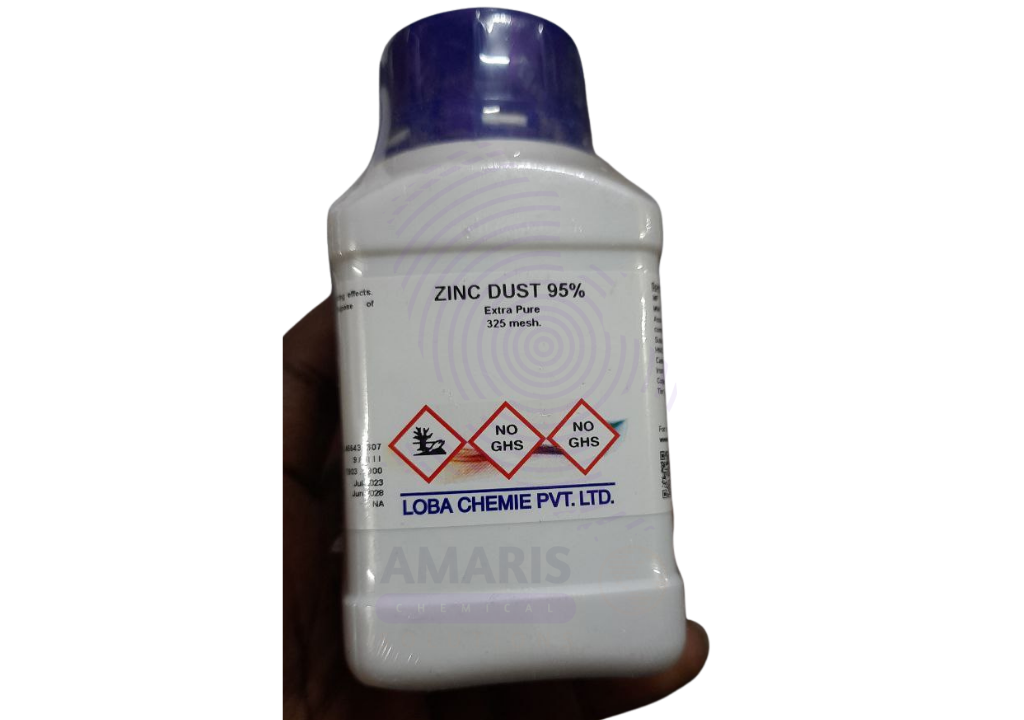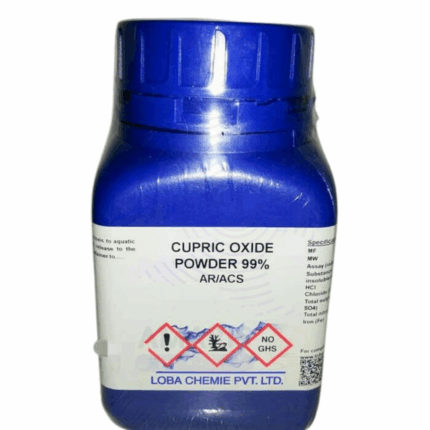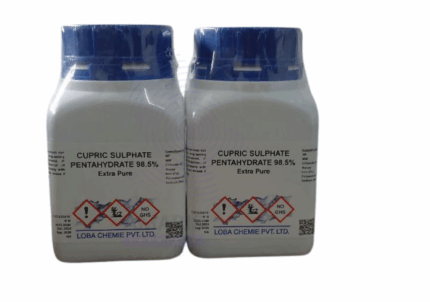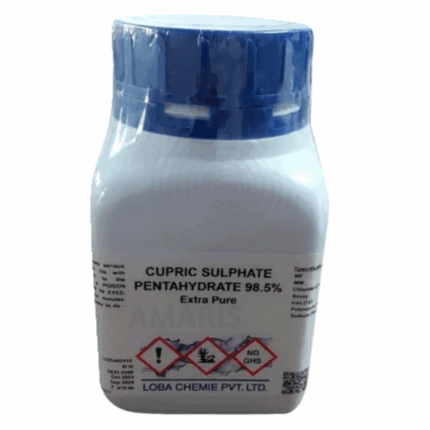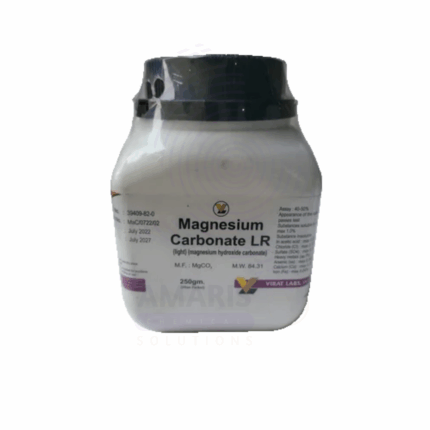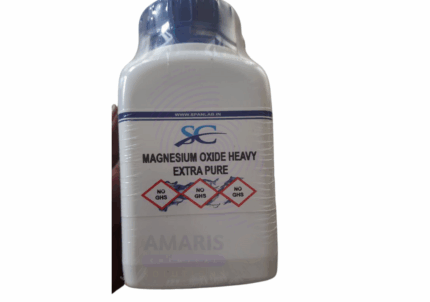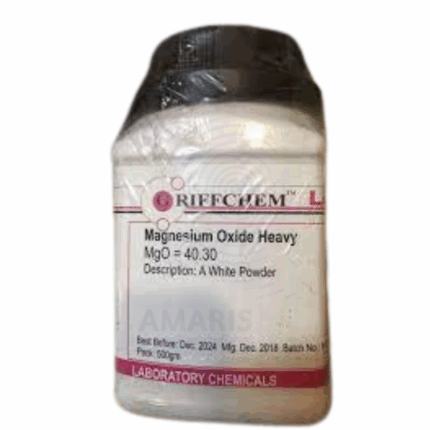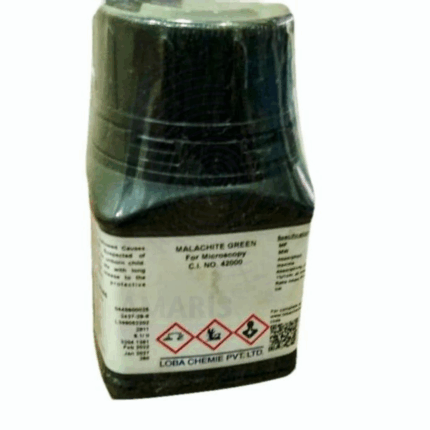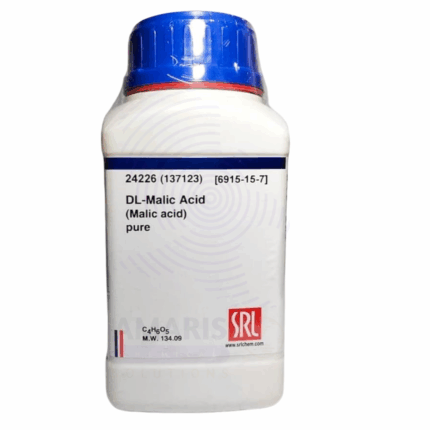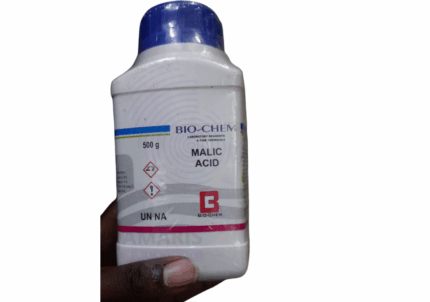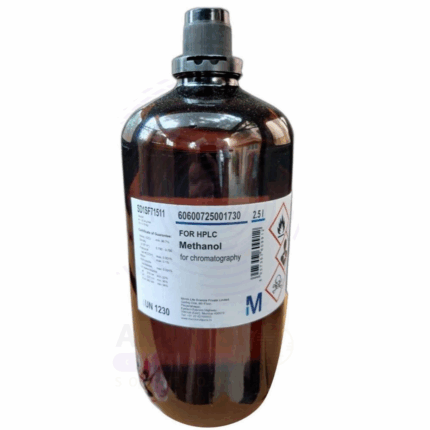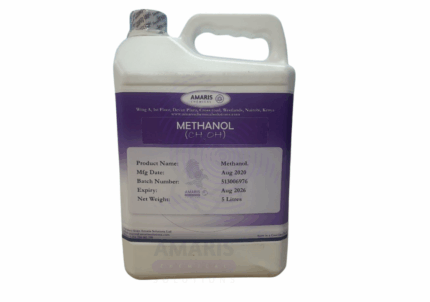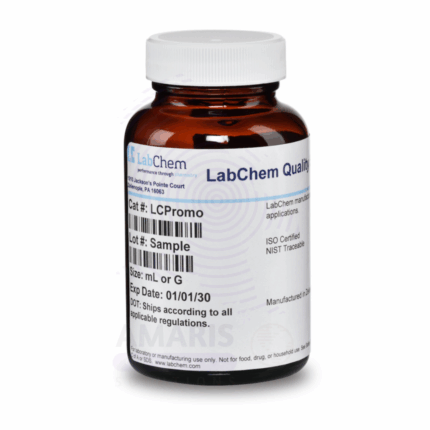
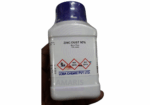
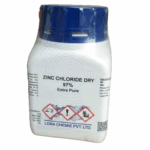

Zinc Dust Extra Pure
$ 17.21 Original price was: $ 17.21.$ 17.09Current price is: $ 17.09.
Zinc Dust Extra Pure is a fine bluish-silver metallic powder primarily composed of elemental zinc with minimal impurities. It serves as a critical reagent and raw material in laboratories and industries, especially in metallurgical, chemical synthesis, and galvanizing applications. Its high surface area and reactivity make it valuable for redox reactions, zinc assays, and protective coatings. The dust form requires careful handling due to potential dust explosion hazards and reactivity with acids producing flammable hydrogen gas. Storage in dry, controlled conditions with appropriate PPE is essential for safe use. This zinc dust meets high purity standards suitable for research, manufacturing, and environmental applications such as water treatment and soil conditioning.
Zinc Dust Extra Pure
PRIMARY USES
- Analytical Reagent & Laboratory Applications:
- Used as a reducing agent in chemical synthesis and analytical reactions
- Employed in laboratory scale metallurgical studies and zinc quantification
- Utilized in galvanic and electrochemical experiments
- Acts as a reagent in organic chemistry for synthesis and catalyst preparation
- Industrial Applications:
- Key raw material in galvanizing processes to provide corrosion protection on steel
- Used in the production of zinc-based alloys and powders
- Important in manufacturing rubber additives, paints, and coatings
- Utilized as an anti-corrosion pigment in coatings and primers
- Pharmaceutical & Cosmetic Industry:
- Source material in pharmaceutical zinc formulations and topical ointments (after refinement)
Secondary Uses
- Environmental Applications:
- Applied in water treatment processes to precipitate heavy metals
- Used in soil remediation to amend zinc-deficient soils
- Agricultural Chemicals:
- Used in micronutrient fertilizers and soil conditioners for zinc supplementation
1. Basic Identification Attributes
Chemical Name: Zinc Dust
CAS Number: 7440-66-6
HS Code: 7901.11.00
Molecular Formula: Zn
Synonyms:
- Zinc powder
- Zinc flakes
- Zinc dust powder
2. Physical & Chemical Properties
Physical State: Fine to coarse powder or flakes
Color & Odor: Bluish-silver metallic appearance, odorless
Melting Point: 419.5 °C
Boiling Point: 907 °C
Density/Specific Gravity: 7.14 g/cm³
Solubility:
- Insoluble in water
- Soluble in acids forming zinc salts and hydrogen gas
pH Level: Neutral in solid form; aqueous suspensions slightly alkaline due to hydrolysis
Vapor Pressure & Volatility: Negligible
Flash Point: Not flammable but fine dust can be combustible under certain conditions
Autoignition Temperature: Not applicable
Viscosity: Not applicable
3. Safety & Hazard Attributes
Hazard Class (GHS Classification):
- May form combustible dust concentrations in air
- Harmful if inhaled in large amounts (dust exposure)
- Skin and eye irritant due to mechanical abrasion
NFPA Ratings: - Health: 1
- Flammability: 1 (due to dust)
- Reactivity: 0
Exposure Limits: - OSHA PEL: 5 mg/m³ (respirable dust)
- ACGIH TLV: 2 mg/m³ (respirable fraction)
Reactivity: - Reacts with acids releasing hydrogen gas (flammable)
- Stable under normal conditions
4. Storage & Handling Attributes
Storage Conditions:
- Store in tightly sealed containers in a cool, dry, well-ventilated area
- Protect from ignition sources and moisture
Incompatible Materials: - Strong oxidizers
- Acids (react vigorously)
- Moisture (may cause slight oxidation)
Container Type: - Metal drums or heavy-duty plastic containers with tight sealing
Shelf Life & Expiration Date: - Stable for years if kept dry and protected from contaminants
Special Handling Requirements: - Use dust control measures to prevent airborne accumulation
- Avoid inhalation and contact with eyes and skin
- Use antistatic measures to prevent dust ignition
5. Regulatory & Compliance Attributes
Regulatory Status:
- Listed under OSHA, EPA, and REACH inventories
- Not classified as hazardous but subject to dust explosion regulations
Transportation Restrictions: - Not classified as hazardous for transport but handle as combustible dust
Waste Disposal Method: - Dispose according to local hazardous waste regulations if contaminated
6. Environmental & Health Impact
Ecotoxicity:
- Low to moderate toxicity to aquatic organisms depending on concentration
Persistence in Environment: - Metallic zinc slowly oxidizes and dissolves, bioavailable as zinc ions
Carcinogenicity/Mutagenicity: - Not classified as carcinogenic or mutagenic
Biodegradability: - Inorganic, not biodegradable
SAFETY PRECAUTIONS
Personal Protective Equipment (PPE):
- Use dust mask or respirator to avoid inhalation
- Wear safety goggles and gloves
- Use protective clothing to prevent skin contact
Handling:
- Work in well-ventilated area
- Avoid creating dust clouds
- Ground containers and equipment to prevent static discharge
Storage:
- Keep container tightly closed
- Store away from ignition sources, acids, and oxidizers
FIRST AID MEASURES
Inhalation:
- Move to fresh air immediately
- Seek medical attention if breathing difficulty occurs
Skin Contact:
- Wash with soap and water to remove dust
- Seek medical advice if irritation persists
Eye Contact:
- Rinse immediately with plenty of water for 15 minutes
- Seek medical attention if irritation continues
Ingestion:
- Rinse mouth with water
- Seek medical attention if large amounts swallowed
FIRE FIGHTING MEASURES
Flammability:
- Not flammable as bulk but fine dust may ignite or explode under certain conditions
Extinguishing Media: - Use dry sand, CO₂, or dry chemical extinguishers
- Avoid water streams which may spread dust or react violently with zinc dust
Hazardous Combustion Products: - Zinc oxide fumes, toxic if inhaled
Firefighter Protection: - Use self-contained breathing apparatus (SCBA) and protective clothing


 Preservatives(food)
Preservatives(food) Flavor Enhancers
Flavor Enhancers Acidulants
Acidulants Sweeteners
Sweeteners Antioxidants
Antioxidants Colorants(food)
Colorants(food) Nutraceutical Ingredients (food)
Nutraceutical Ingredients (food) Nutrient Supplements
Nutrient Supplements Emulsifiers
Emulsifiers
 Collectors
Collectors Dust Suppressants
Dust Suppressants Explosives and Blasting Agents
Explosives and Blasting Agents Flocculants and Coagulants
Flocculants and Coagulants Frothers
Frothers Leaching Agents
Leaching Agents pH Modifiers
pH Modifiers Precious Metal Extraction Agents
Precious Metal Extraction Agents
 Antioxidants(plastic)
Antioxidants(plastic) Colorants (Pigments, Dyes)
Colorants (Pigments, Dyes) Fillers and Reinforcements
Fillers and Reinforcements Flame Retardants
Flame Retardants Monomers
Monomers Plasticizers
Plasticizers Polymerization Initiators
Polymerization Initiators Stabilizers (UV, Heat)
Stabilizers (UV, Heat)
 Antifoaming Agents
Antifoaming Agents Chelating Agents
Chelating Agents Coagulants and Flocculants
Coagulants and Flocculants Corrosion Inhibitors
Corrosion Inhibitors Disinfectants and Biocides
Disinfectants and Biocides Oxidizing Agents
Oxidizing Agents pH Adjusters
pH Adjusters Scale Inhibitors( water)
Scale Inhibitors( water)
 Antioxidants(cosmetic)
Antioxidants(cosmetic) Emollients
Emollients Fragrances and Essential Oils
Fragrances and Essential Oils Humectants
Humectants Preservatives
Preservatives Surfactants(cosmetic)
Surfactants(cosmetic) Thickeners
Thickeners UV Filters
UV Filters
 Fertilizers
Fertilizers Soil Conditioners
Soil Conditioners Plant Growth Regulators
Plant Growth Regulators Animal Feed Additives
Animal Feed Additives Biostimulants
Biostimulants Pesticides (Herbicides, Insecticides, Fungicides)
Pesticides (Herbicides, Insecticides, Fungicides)
 Active Pharmaceutical Ingredients (APIs)
Active Pharmaceutical Ingredients (APIs) Excipients
Excipients Solvents(pharmaceutical)
Solvents(pharmaceutical) Antibiotics
Antibiotics Antiseptics and Disinfectants
Antiseptics and Disinfectants Vaccine Adjuvants
Vaccine Adjuvants Nutraceutical Ingredients (pharmaceutical)
Nutraceutical Ingredients (pharmaceutical) Analgesics & Antipyretics
Analgesics & Antipyretics
 Analytical Reagents
Analytical Reagents Solvents(lab)
Solvents(lab) Chromatography Chemicals
Chromatography Chemicals Spectroscopy Reagents
Spectroscopy Reagents microbiology-and-cell-culture-reagents
microbiology-and-cell-culture-reagents Molecular Biology Reagents
Molecular Biology Reagents Biochemical Reagents
Biochemical Reagents Inorganic and Organic Standards
Inorganic and Organic Standards Laboratory Safety Chemicals
Laboratory Safety Chemicals Specialty Laboratory Chemicals(Special Laboratory Equipment)
Specialty Laboratory Chemicals(Special Laboratory Equipment)
 Demulsifiers
Demulsifiers Hydraulic Fracturing Fluids
Hydraulic Fracturing Fluids Scale Inhibitors(oil)
Scale Inhibitors(oil) Surfactants(oil)
Surfactants(oil) Drilling Fluids
Drilling Fluids
 Dyes and Pigments
Dyes and Pigments Bleaching Agents
Bleaching Agents Softening Agents
Softening Agents Finishing Agents
Finishing Agents Antistatic Agents
Antistatic Agents
 Admixtures
Admixtures Waterproofing Agents
Waterproofing Agents Sealants and Adhesives
Sealants and Adhesives Curing Compounds
Curing Compounds Concrete Repair Chemicals
Concrete Repair Chemicals Anti-Corrosion Coatings
Anti-Corrosion Coatings
 Surfactants(cleaning)
Surfactants(cleaning) Builders
Builders Enzymes
Enzymes Solvents (Cleaning)
Solvents (Cleaning) Fragrances
Fragrances
 Electronic Chemicals
Electronic Chemicals Catalysts
Catalysts Lubricants
Lubricants Photographic Chemicals
Photographic Chemicals Refrigerants
Refrigerants Automotive chemicals
Automotive chemicals Pyrotechnic Chemicals
Pyrotechnic Chemicals
 Biodegradable Surfactants
Biodegradable Surfactants Bio-based Solvents
Bio-based Solvents Renewable Polymers
Renewable Polymers Carbon Capture Chemicals
Carbon Capture Chemicals Wastewater Treatment Chemicals
Wastewater Treatment Chemicals
 Pigments
Pigments Solvents(paint)
Solvents(paint) Specialty Coatings
Specialty Coatings Binders/Resins
Binders/Resins Additives
Additives Driers
Driers Anti-Corrosion Agents
Anti-Corrosion Agents Functional Coatings
Functional Coatings Application-Specific Coatings
Application-Specific Coatings
 Fresh Herbs
Fresh Herbs Ground Spices
Ground Spices Whole Spices
Whole Spices Spice Blends
Spice Blends Dried Herbs
Dried Herbs
 Leavening Agents
Leavening Agents Dough Conditioners
Dough Conditioners Flour Treatments
Flour Treatments Fat Replacers
Fat Replacers Decoratives
Decoratives Preservatives(baking)
Preservatives(baking)
 Plasticizers & Softeners
Plasticizers & Softeners Reinforcing Agents
Reinforcing Agents Adhesion Promoters
Adhesion Promoters Vulcanizing Agents
Vulcanizing Agents Antidegradants
Antidegradants Blowing Agents
Blowing Agents Fillers & Extenders
Fillers & Extenders Accelerators & Retarders
Accelerators & Retarders
